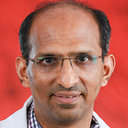The significance of gastric emptying in children with intestinal malrotation.
الكلمات الدالة
نبذة مختصرة
Persistent gastrointestinal symptoms are common postoperatively in children with intestinal malrotation. We investigated this problem in 14 children with intestinal malrotation who had a Ladd procedure (3 patients), gastroschisis repaired (6 patients), or omphalocele repaired (5 patients) between one month and 15 years prior to study. In 13 patients, gastric emptying was measured at 30 minutes (%GE30) and at 60 minutes (%GE60) following ingestion of 99m-Tc sulfur colloid in apple juice. We estimated the degree of gastric peristalsis using the %GE corrected for immediate postcibal gastroesophageal reflux (corrected %GE). Patients with vomiting exhibited slow gastric emptying compared to patients without vomiting (%GE30: 14.0 +/- 5.5 v 32.5 +/- 4.2, P less than .005). The slow gastric emptying was related to slow gastric peristalsis (corrected %GE30: 20.3 +/- 5.0 v 47.1 +/- 6.0, P less than .005). In all 5 patients with persistent bloating and diarrhea, gastric peristalsis was rapid at 30 minutes (corrected %GE30 = 56.7 +/- 4.2) and at 60 minutes (corrected %GE60 = 69.5 +/- 5.3). To assess the role of gastroesophageal reflux (GER) in persisting symptoms, all children had extended (18 to 24 hours) esophageal pH monitoring. Eleven (79%) of the 14 patients demonstrated GER by esophageal pH monitoring, including four of six patients without reflux symptoms. All ten children under two years of age demonstrated GER regardless of symptoms or congenital anatomic abnormality. In conclusion, GER is common in patients under two years of age with intestinal malrotation, but clinical symptoms seem related more to extreme variations in gastric peristalsis than to GER.


